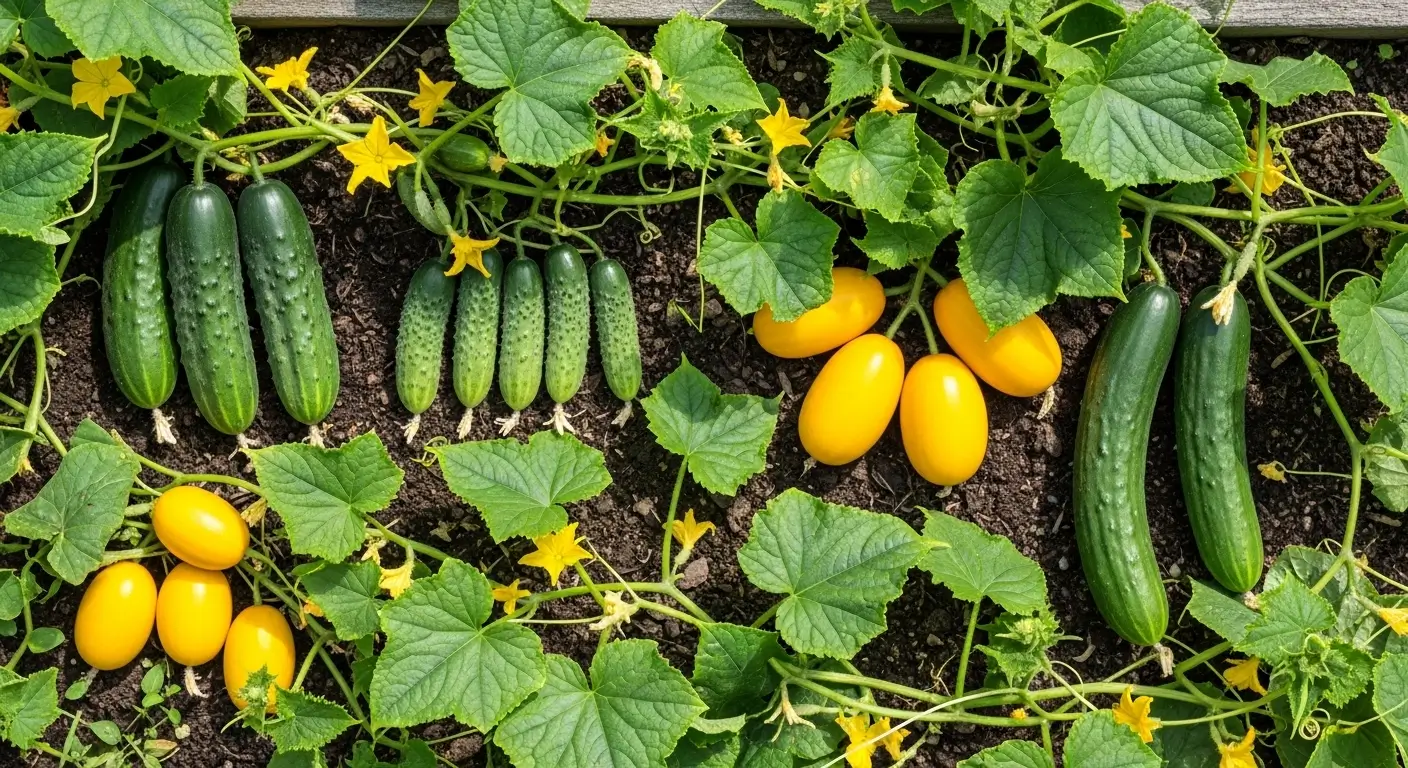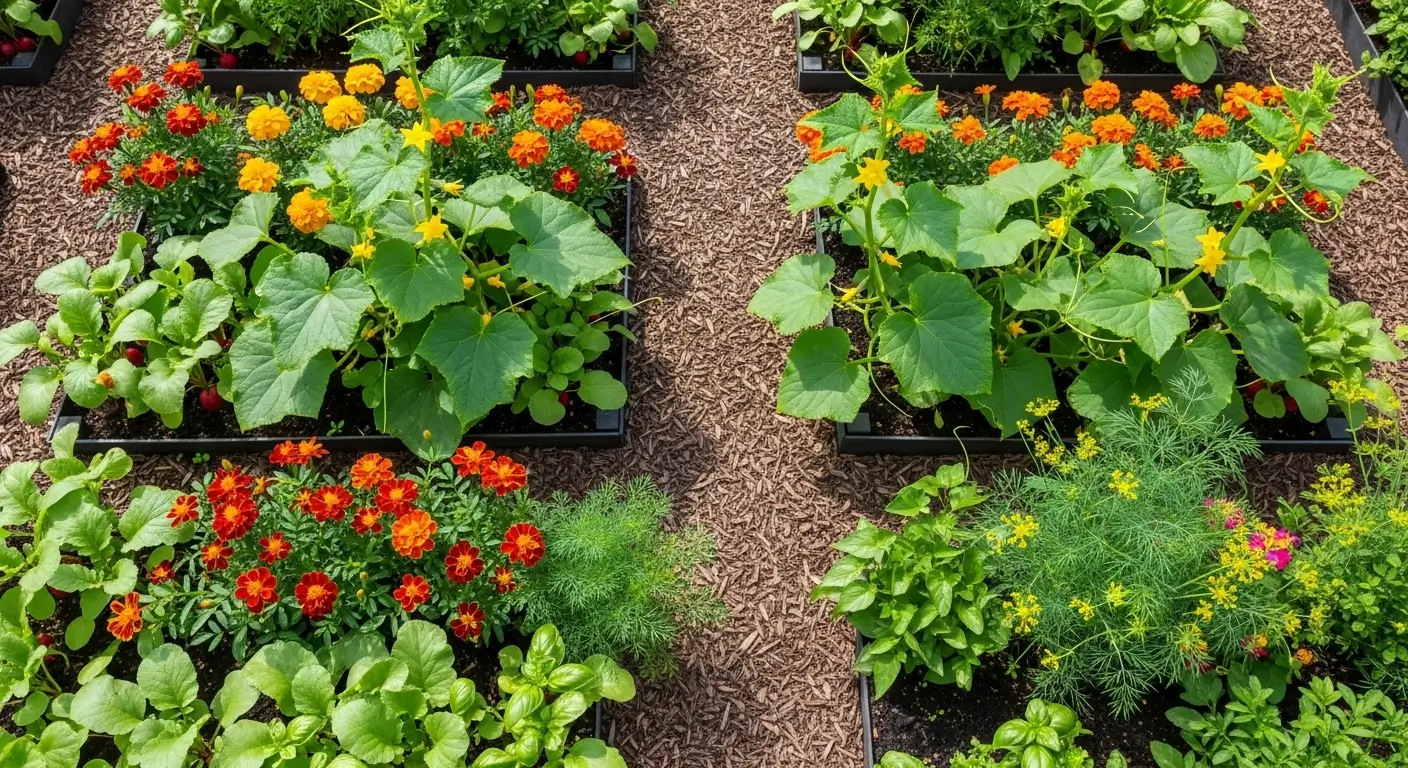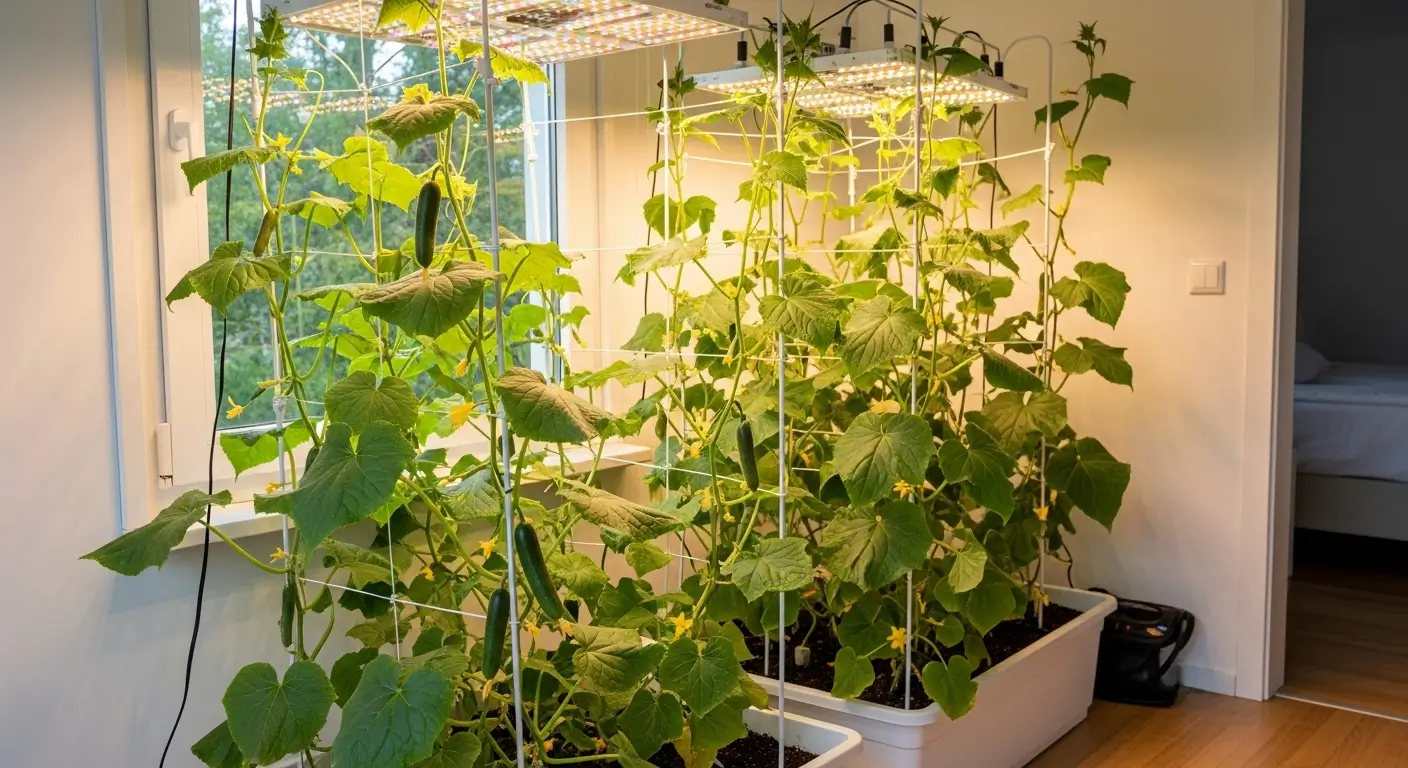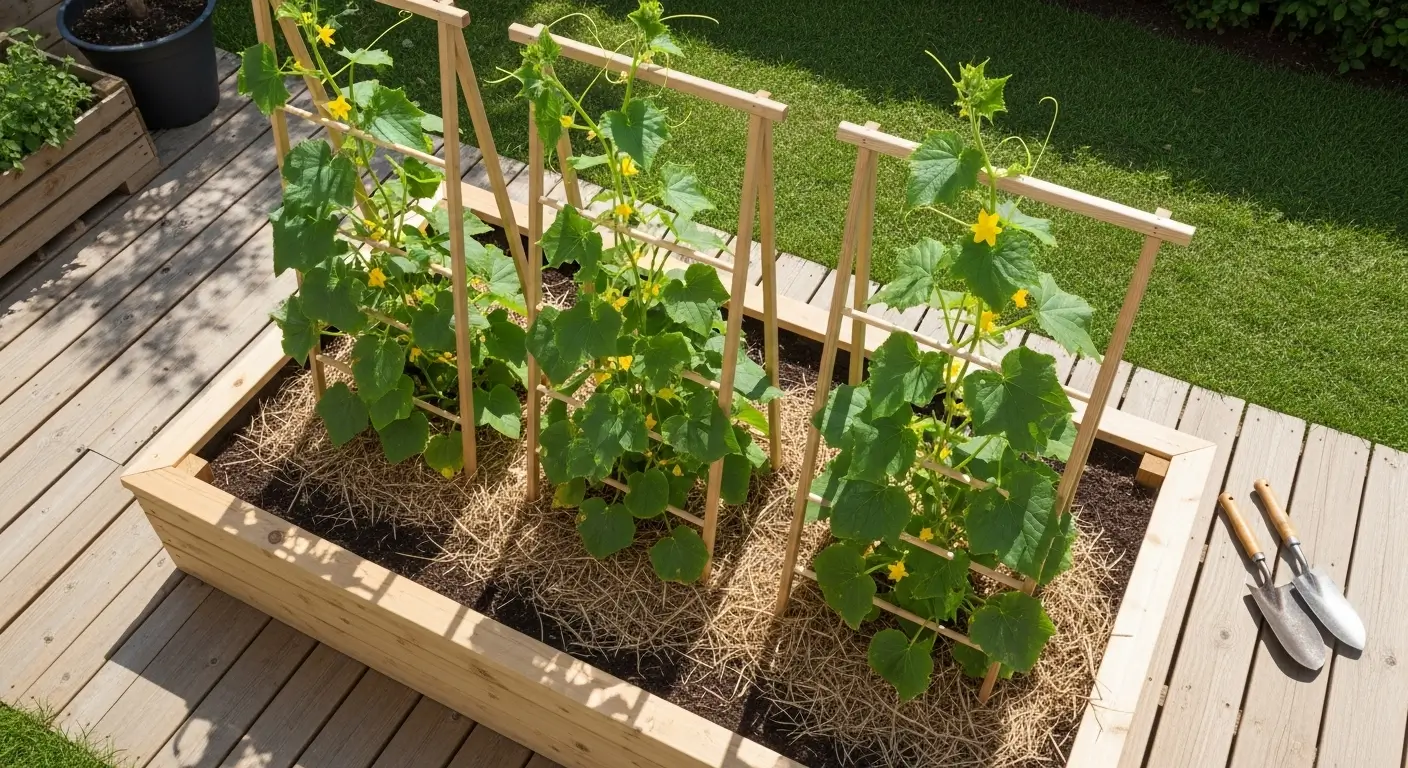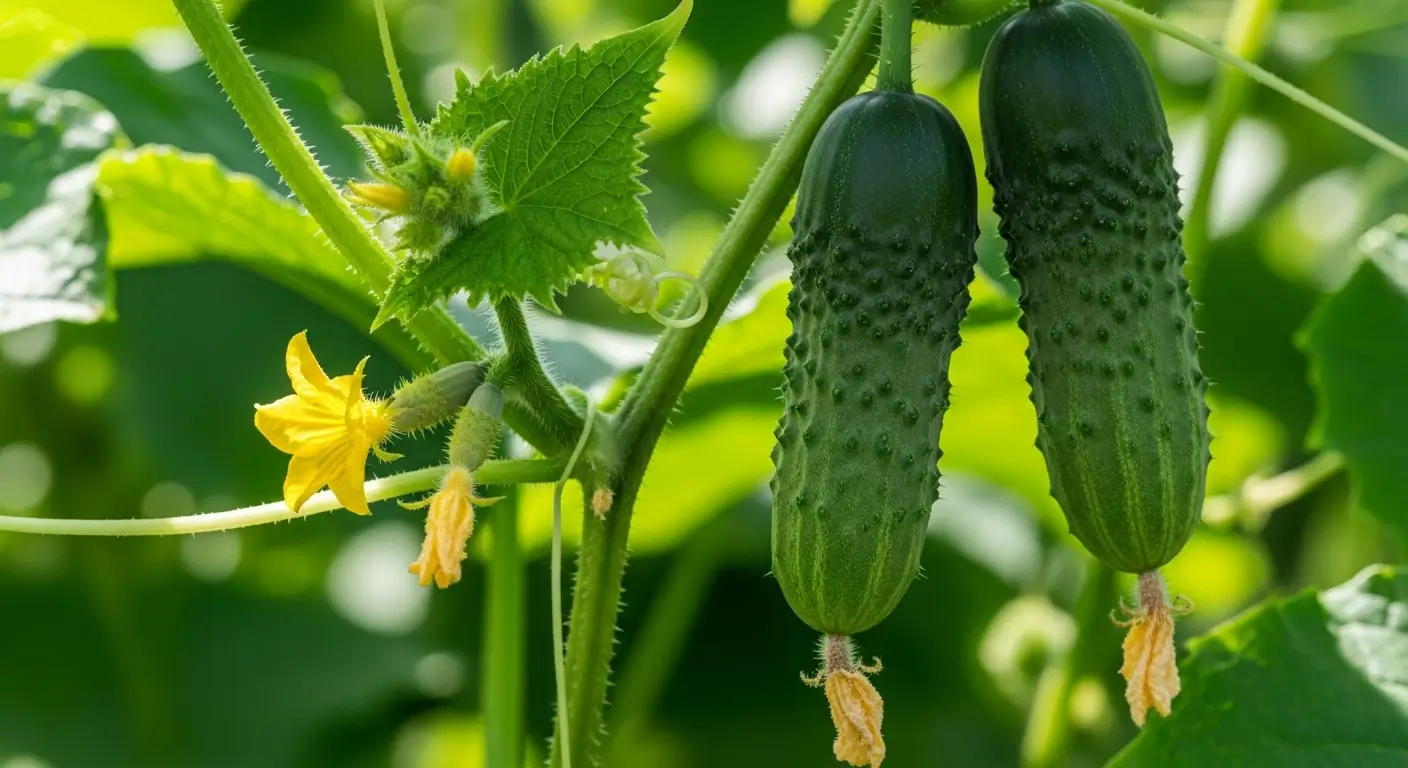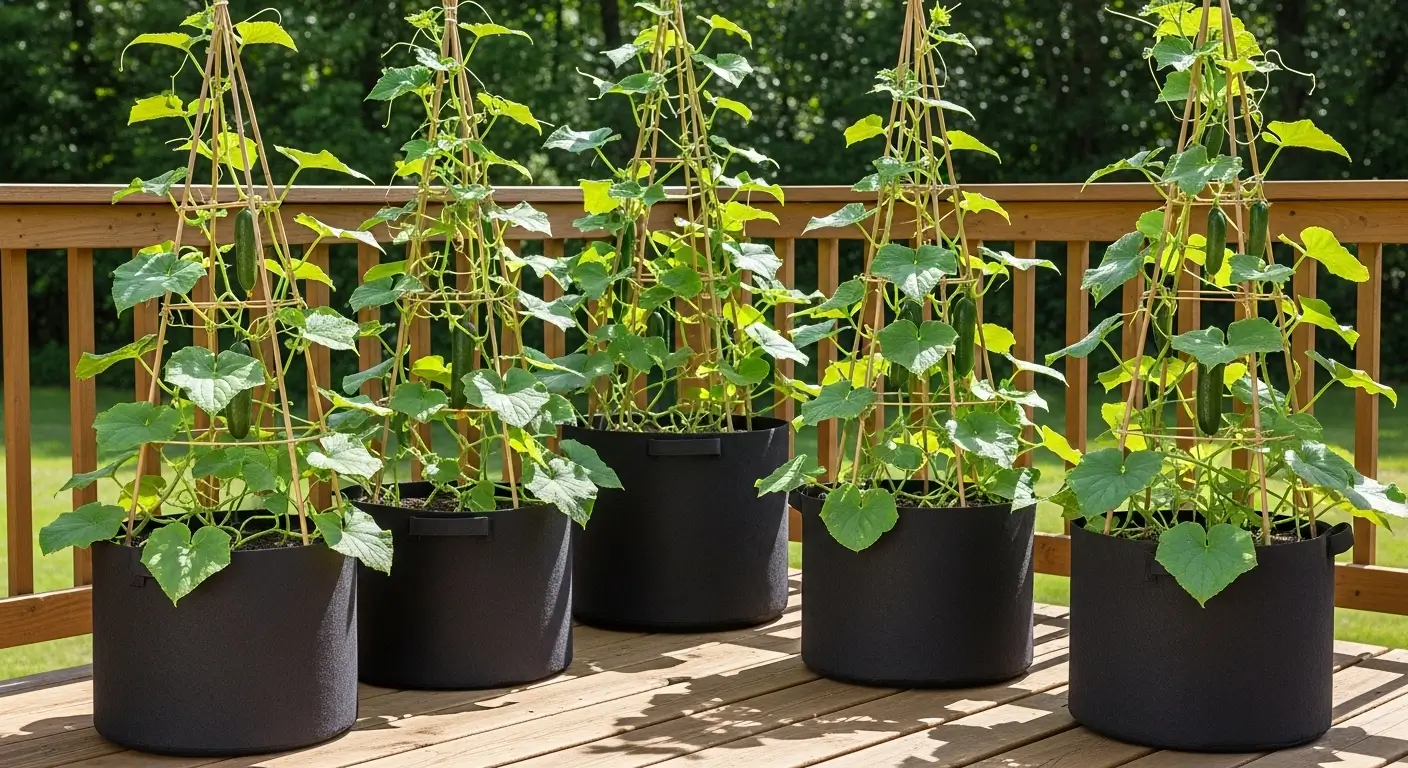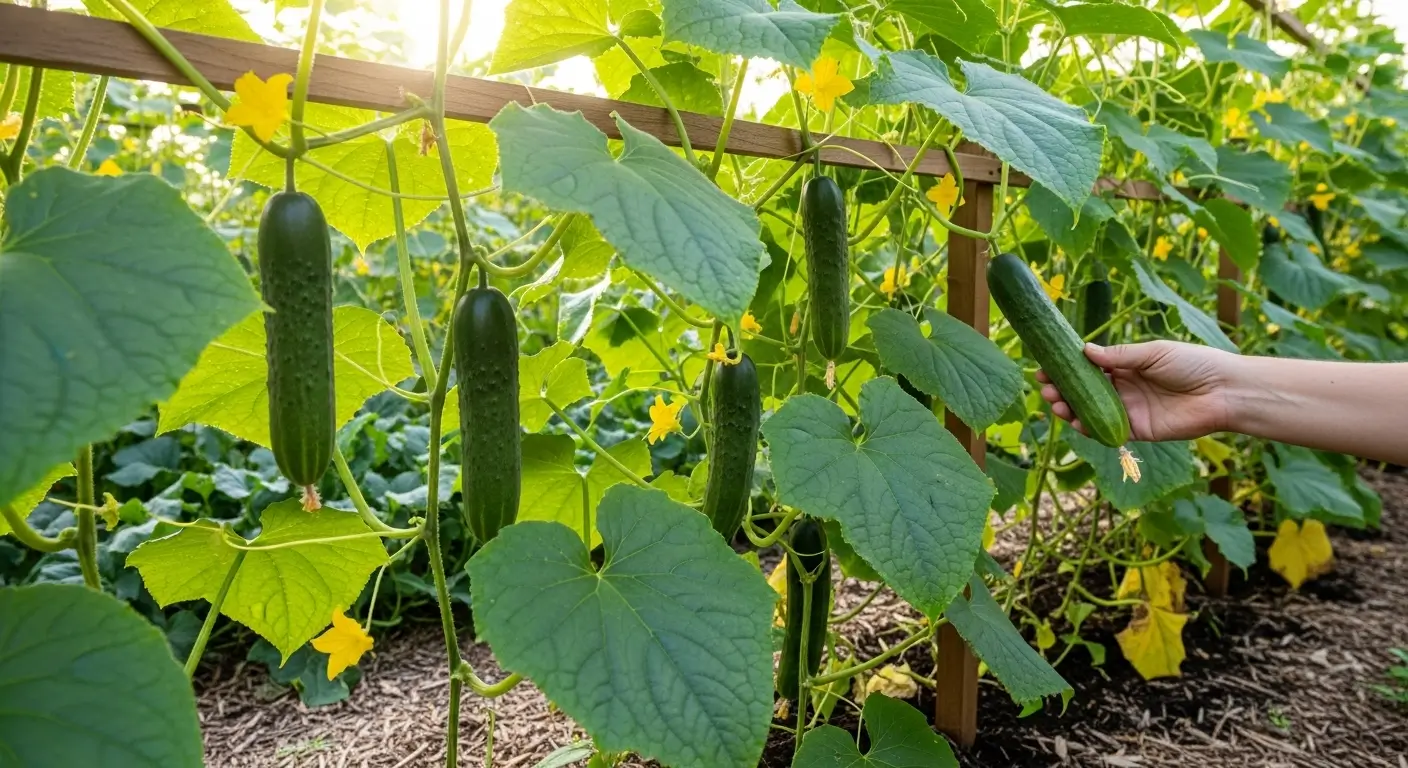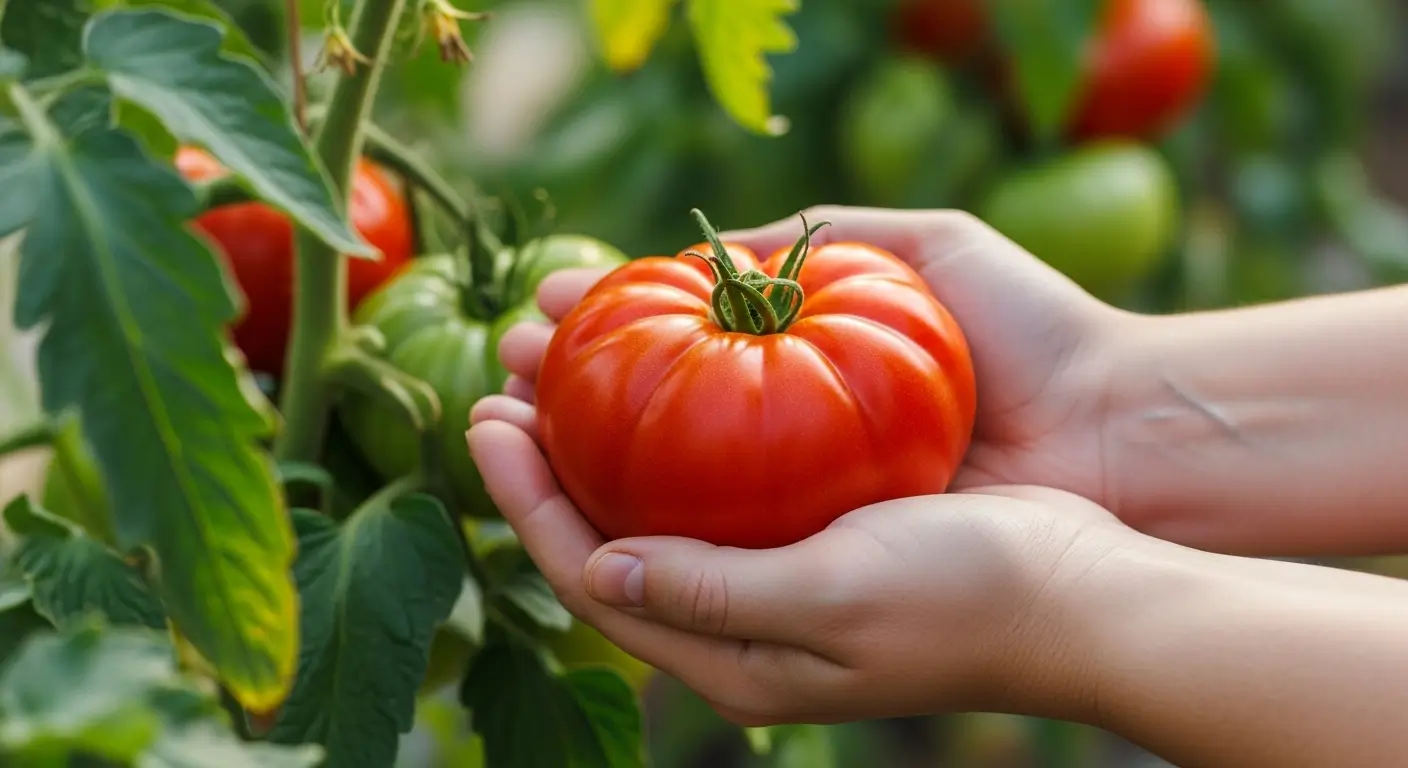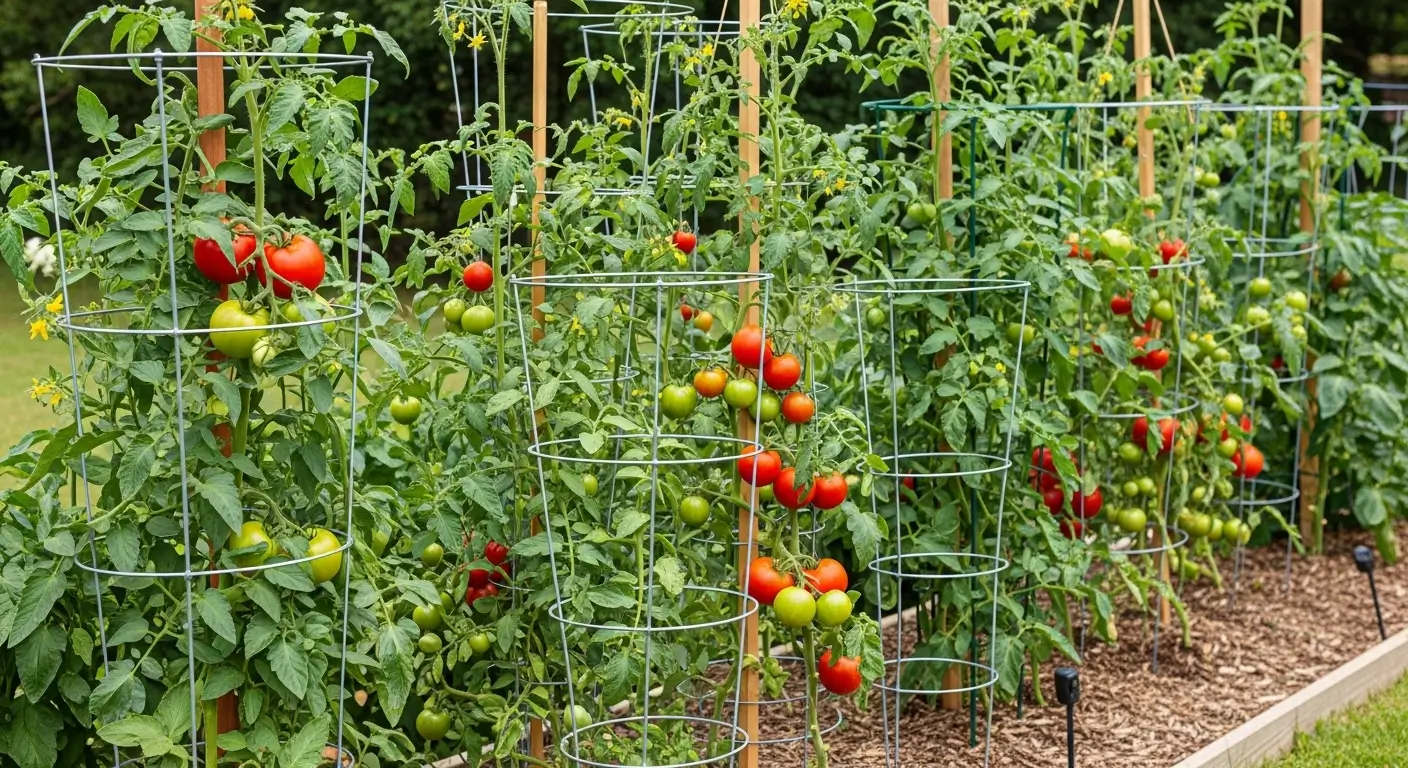Okay, picture this: I’m standing in the seed section at the garden center last spring, completely overwhelmed by what felt like a million different cucumber varieties. I mean, seriously—who knew there were so many ways to grow what’s basically crunchy water?
But here’s the kicker—I flashbacked to my first cucumber disaster. I was a total newbie and grabbed whatever cucumber seeds looked prettiest (don’t judge). Turns out I’d picked some monster pickling variety, and let me tell you, those things were NOT meant for my cucumber salad dreams. One bite and I made a face like I’d eaten a lemon. Bitter city, population: me.
That expensive mistake taught me something super important: choosing the right cucumber varieties isn’t just about pretty seed packets. It’s about matching what you grow to what you actually want to eat. And trust me, after fifteen years of growing everything from tiny snacking cukes to foot-long monsters, I’ve learned there’s definitely a perfect cucumber out there for everyone.
Table of Contents
Understanding Cucumber Types: The Foundation of Smart Selection
Alright, let’s break this down into bite-sized pieces (pun totally intended). Cucumbers basically come in three primary flavors, and once you get this, you’ll never accidentally end up with bitter salad cukes again.
Slicing cucumbers are your go-to fresh eating buddies. Think smooth skin, mild taste, and that perfect crunch that makes summer salads sing. They’re usually longer and have way fewer seeds than their cousins.
Pickling cucumbers are like the tough little siblings. They’re shorter, bumpier, and built to survive pickle-making without turning into mush. I learned this lesson the hard way when I tried to pickle regular slicing cukes—total disaster. They basically dissolved in the brine. Not cute.
Specialty varieties are where things get fun and weird (in the best way). We’re talking about everything from cucumber “lemons” to foot-long Asian varieties that’ll make your neighbors do a double-take.
The Best Slicing Cucumber Varieties for Fresh Eating
Marketmore 76: The Reliable Workhorse
Can we talk about my love affair with Marketmore 76? This variety is like that friend who always shows up with pizza when you’re having a rough day—totally dependable and precisely what you need.
These babies pump out gorgeous 8-inch dark green cucumbers that taste like summer should taste. No weird bitterness, no tough skin, just pure cucumber perfection. And here’s the best part—they’re tough as nails regarding diseases.

In my humid Illinois garden, where other cucumber plants turn into sad, spotty messes by August, Marketmore 76 just keeps on trucking. I’ve literally harvested fresh cukes well into October with these guys. If you’re new to growing cucumbers, start here. You can thank me later.
Straight Eight: The Classic Beauty
The name says it all—these cucumbers grow so straight and uniform, they look like they came from cucumber central casting. I’ve been growing this old-school variety for over ten years, and it still makes me happy every single time.
The flavor is exactly what you want in a cucumber—mild, refreshing, with just the right amount of crunch. They hit about 8 inches when ready, which is perfect for everything from fancy cucumber water to chunky Greek salad. Plus, since it’s an heirloom, you can save seeds and grow the exact same excellent cucumbers next year. It’s like getting free seeds forever.
Japanese Climbing: The Space-Saver’s Dream
Holy moly, if you’re working with a tiny garden, Japanese Climbing cucumbers will blow your mind. I discovered these when I was trying to squeeze more veggies into my cramped raised beds, and wow—these things will climb 8 feet high if you let them.
The cucumbers are long and skinny and have this super thin skin you don’t need to peel. And talk about productive! Last summer, just two plants kept my entire family swimming in fresh cukes all season. Fair warning, though—get yourself a really sturdy trellis. I learned that one the hard way when my flimsy tomato cage collapsed under the weight. Oops.
Top Pickling Cucumber Varieties for Preservation
Chicago Pickling: The Midwest Favorite
Being a Midwest girl, I had to try Chicago Pickling, and let me tell you—this variety totally lives up to the hype. These chunky little 3-4 inch cukes are basically born to become crispy dill pickles.
The plants are ridiculously productive. Like, embarrassingly productive. Last summer, I was forcing bags of cucumbers on my neighbors, my mail carrier, basically anyone who’d take them. They’re also super resistant to the gross diseases that usually plague cucumber plants, which means less stress for you and more time for actual pickle-making.
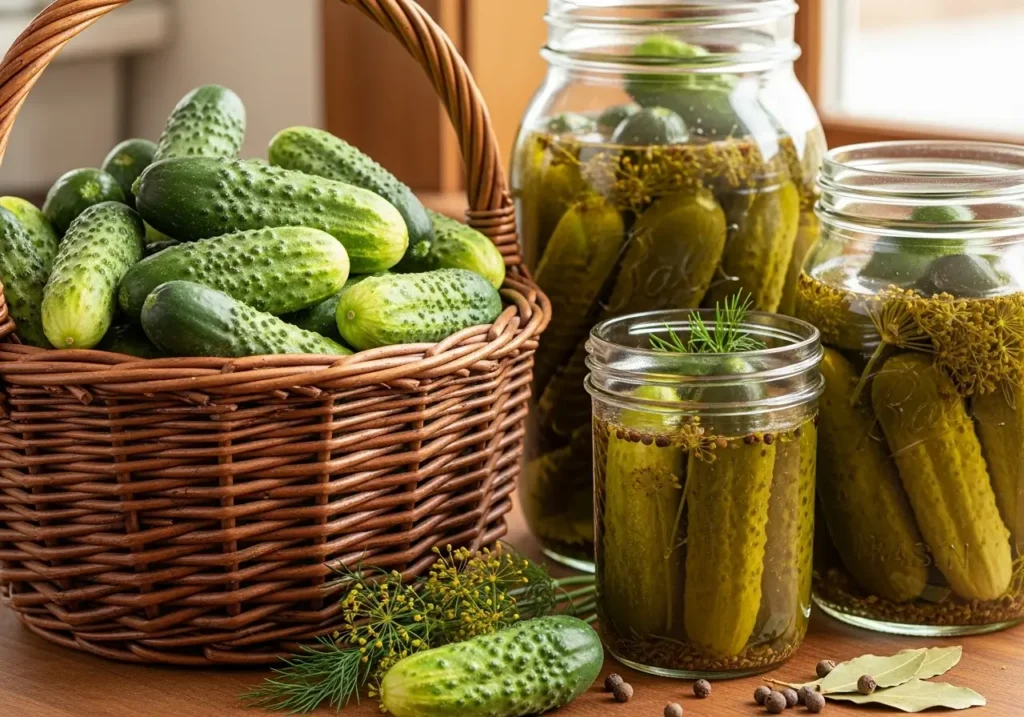
Boston Pickling: The Heirloom Champion
This variety has been around since the 1880s, and honestly, there’s a reason it’s still kicking. These 3-inch bumpy little guys have that warty skin that pickle-makers dream about—it grabs onto brine and spices like nobody’s business.
What I really love is how fast they go from seed to pickle jar—we’re talking 50-55 days. That means you can keep planting new batches all summer for non-stop pickle action. The flavor is spot-on too—not too mild, not too strong. Perfect for everything from sweet bread-and-butter pickles to those super spicy ones that clear your sinuses.
Specialty and Unique Cucumber Varieties Worth Growing
Lemon Cucumber: The Conversation Starter
The first time I grew these, my neighbor, Mrs. Peterson, came over, convinced I’d planted the world’s weirdest squash. I mean, they look exactly like giant lemons! But bite into one and boom—classic cucumber flavor with this awesome hint of sweetness.
These are total showstoppers at barbecues. Kids especially go nuts for them because, let’s face it, yellow cucumbers are just cool. They’re also tough little cookies that keep producing even when it’s hot enough to melt asphalt. Definitely worth growing just for the fun factor.
Armenian Cucumber: The Heat-Loving Giant
Technically, this isn’t even a real cucumber (it’s actually a melon, go figure), but who cares? Armenian cucumbers laugh in the face of heat waves that throw other varieties in the towel.
These bad boys can grow up to 18 inches long, but I like picking them around 12-14 inches for the best eating. The skin is thin and totally edible, and they stay crisp even when it’s blazing hot outside. They’re amazing in Mediterranean dishes or anywhere you want cucumber flavor without that bitter bite that stressed plants sometimes get.
Suyo Long: The Asian Delicacy
This Chinese variety totally changed my mind about what cucumbers could be. They can grow crazy long—up to 18 inches—but here’s the kicker: they’re super sweet and never bitter, even when they get huge.
The skin has these cool ridges and stays tender, so no peeling is required. I love throwing these in Asian salads and stir-fries where their sweet crunch really shines. Plus, each plant pumps out 15-20 full-sized cucumbers. It’s like winning the cucumber lottery.
Choosing the Best Cucumber Seeds for Your Garden
When I’m seed shopping each winter (yeah, I’m that person who starts planning gardens in January), I’ve got a mental checklist that keeps me from making expensive mistakes.
Growing space is enormous. Got a tiny balcony? Your best friends are Bush varieties or climbers that grow up instead of out. Big garden? Go wild with those sprawling vine types that take over half your yard.
Disease resistance has become my obsession. Look for varieties that are resistant to powdery mildew, downy mildew, and cucumber mosaic virus. Trust me, dealing with sick plants is no fun, and prevention beats treatment every time. Cornell Extension provides detailed information on specific resistant varieties like Marketmore 76 and disease management strategies that can save your entire crop.
Days to maturity matter way more than you’d think. Short growing season? Stick with varieties that mature in 50-60 days to get multiple harvests. Longer season? You can play around with the slower varieties that have unique characteristics.
What you actually want to eat should drive everything. Don’t grow pickling cucumbers just because your neighbor raves about them if your family only eats fresh cukes. Grow what makes you happy.
Growing Tips for Maximum Success with Any Variety
No matter which cucumber varieties you pick, I’ve learned some universal truths to save you from heartbreak.
Good soil is everything. I’m talking rich, composted, well-draining soil that makes your cucumbers want to party. I dump at least 2 inches of finished compost into my beds before planting, and the difference is night and day.
Keep them watered but not waterlogged. Cucumbers are thirsty plants, but they hate wet feet. I mulch like crazy around my plants—it keeps the soil moist during our crazy Illinois thunderstorms without creating swampy conditions.
Give them something to lean on. Even bush varieties appreciate a little support when they’re loaded with fruit. Plus, cucumbers grown off the ground are cleaner and have fewer bug problems. Win-win.
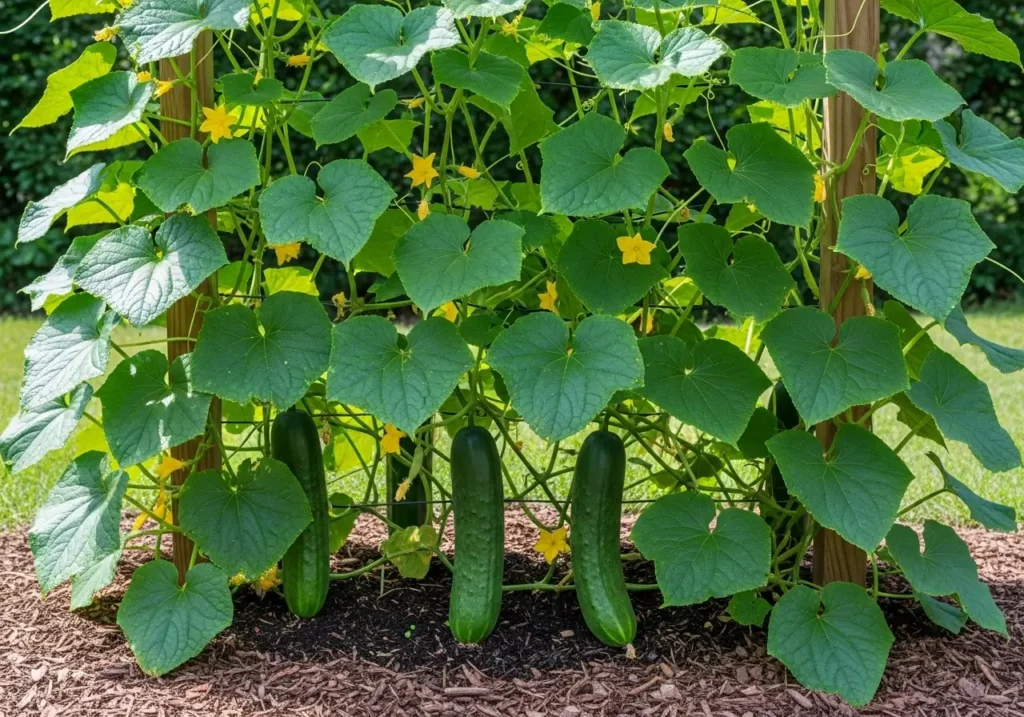
For the full scoop on growing excellent cucumbers, check out our complete cucumber growing guide, where I spill all my secrets.
Timing Your Cucumber Planting for Optimal Harvest
Here’s the thing about timing—patience totally pays off. I used to be that eager gardener rushing to plant too early, and let me tell you, it backfired every single time.
Cucumbers need soil that’s consistently above 60°F to even think about germinating. I’ve learned to wait until nighttime temperatures stay above 50°F before direct seeding. For earlier starts, I begin seeds indoors about 2-3 weeks before the last frost date, but honestly? Direct seeding usually catches up anyway.
Wondering when you’ll actually get to eat your first cucumber? Our guide on how long cucumbers take to grow breaks down the timeline by variety, so you can plan your summer salads accordingly.
And if you’re crazy like me and want fresh cucumbers year-round, growing cucumbers indoors is totally doable with the proper setup. Fair warning—it’s addictive.
Creating Your Personal Cucumber Variety Collection
Over the years, I’ve developed my “cucumber strategy”—a mix of varieties that keeps me in perfect cucumbers all season long without overwhelming me with too much of one type.
Early season belongs to Marketmore 76 because I always crave that first taste of summer freshness. Mid-season brings Chicago Pickling into action right when I’m getting serious about filling my pickle jars. Late season is all about heat-tolerant varieties like Armenian cucumber that keep producing when everything else has given up.
This approach means I’m never without fresh cukes, and I’m not drowning in 50 pickling cucumbers all at once (been there, done that, filled every jar in the house). It’s taken some trial and error to figure out my perfect mix. Still, the experimenting has been half the fun.
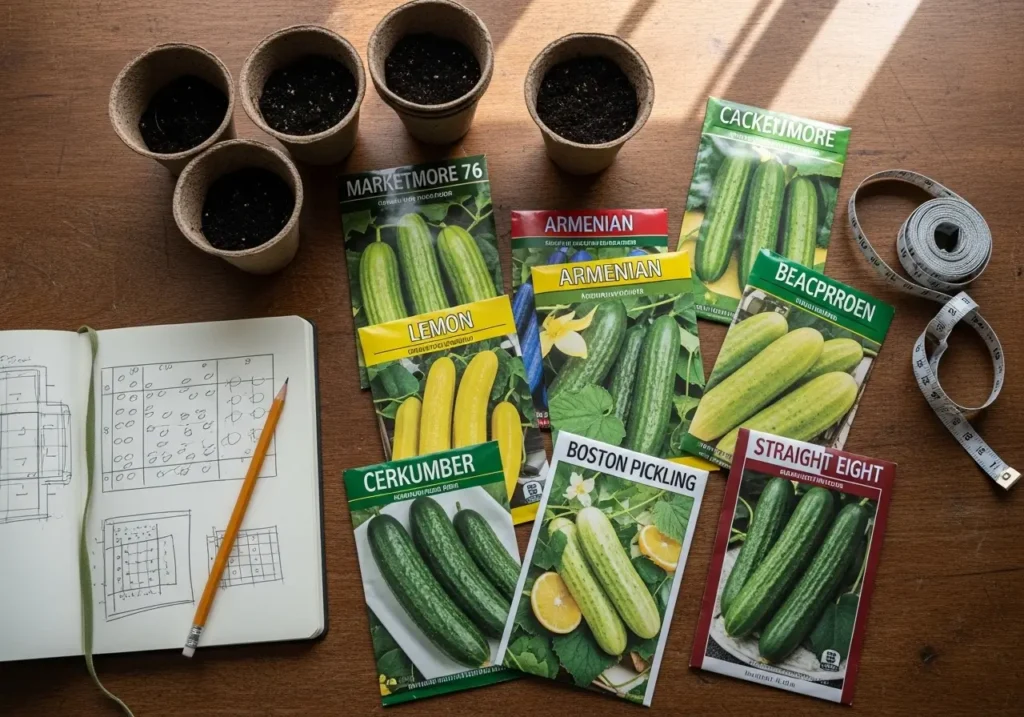
Key Takeaways for Cucumber Variety Success
Picking the right cucumber varieties doesn’t have to make your head spin. Here’s what I’ve learned after years of successes and spectacular failures:
- Match your varieties to what you actually want to do with them—slicing, pickling, or just showing off weird varieties to your friends.
- Think about your space and pick bush, climbing, or sprawling types that’ll actually fit.
- Disease resistance is your friend—seriously, sick plants are no fun for anyone.
- Plant different varieties that mature at different times, so you’re not buried in cucumbers all at once
- Try something weird once you’ve mastered the basics—gardening should be fun!
The cool thing about growing multiple cucumber varieties is figuring out which ones work best in your specific garden and for your family’s taste buds. What’s impressive in my Illinois garden might hate your climate, and what my family devours fresh might not be what yours wants pickled.
Your Cucumber Growing Journey Starts Now
Looking back at my cucumber growing adventure—from those early bitter disasters to last summer’s epic harvest of six different varieties—I’m reminded why I fell in love with this gardening thing. Every variety has its own personality, opens up new possibilities, and connects us to gardeners worldwide who’ve been growing and saving these seeds for ages.
Whether you’re planning your very first cucumber patch or looking to expand your current collection, remember that the best variety is the one that actually grows well in your garden and makes your family happy. Start with one or two reliable varieties that won’t stress you out, then let your curiosity run wild.
So, what cucumber varieties are you dying to try this season? Please comment and tell me about your wins, epic fails, and any astonishing discoveries you’ve made. The best gardening tips come from sharing stories with fellow plant nerds who enjoy biting into that first perfect cucumber of the summer!
Cucumber Varieties: Most Asked Questions by Home Gardeners
What are the best cucumber varieties for beginners who have never grown cucumbers before?
Honestly, start with Marketmore 76 – it’s like the golden retriever of cucumber varieties! I always tell new gardeners this one because it’s incredibly forgiving and disease-resistant. You’ll get consistent 8-inch cucumbers that taste amazing, and the plants keep producing even when you make rookie mistakes. Trust me, I’ve seen so many beginners succeed with this variety when others left them frustrated.
Which cucumber varieties work best for small spaces like balconies or tiny gardens?
Japanese Climbing cucumbers are absolute game-changers for small spaces! These beauties grow up instead of out – we’re talking 8 feet high when given proper support. Two plants kept my whole family in fresh cucumbers all summer, and they only took up about 2 square feet of ground space. Just make sure you have a really sturdy trellis because I learned the hard way when mine collapsed under the weight!
What’s the difference between slicing and pickling cucumber varieties, and can I use them interchangeably?
Oh boy, I made this mistake early on and ended up with mushy pickles! Slicing varieties like Marketmore 76 have thin skins and fewer seeds – perfect for fresh eating but they turn to mush in brine. Pickling varieties like Chicago Pickling have bumpy, thicker skins that grab onto pickling spices and stay crispy. You can eat pickling cukes fresh (they’re just fine), but please don’t try to pickle slicing varieties – save yourself the disappointment!
